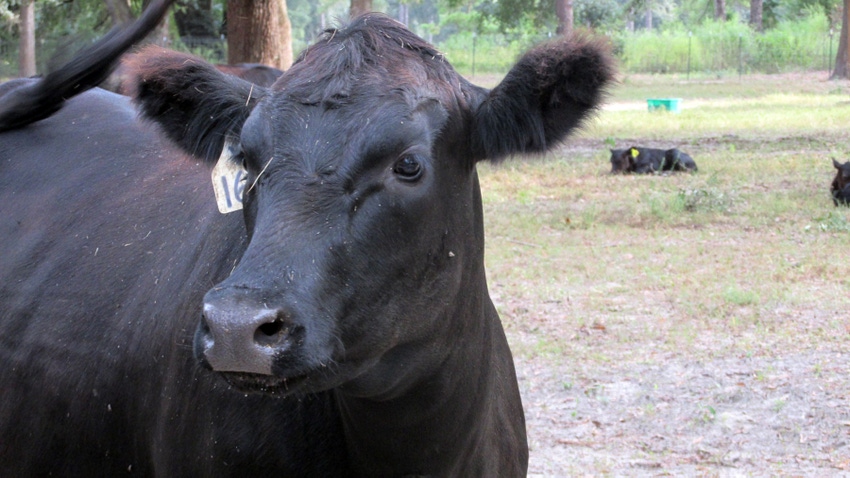February 8, 2023

At a Glance
- The issue with the 2023 calf crop is that it will likely be 900,000 head smaller than the 2022 calf crop.
- The majority of the room for expansion will be in the Plains from Texas to Nebraska and the Mid-South.
Plenty has been written on USDA’s Cattle inventory report released Jan. 31. Here are some observations by a few of the Southern Ag Today livestock economists from around the South.
Andrew Griffith, University of Tennessee. Despite the bullishness of the cattle inventory report, beef cattle herd expansion will not be able to begin until the fall calf crop is ready to hit the ground, and it will only start if ample supplies of hay are harvested in 2023 and fall grazing looks promising.
This means most of the heifers in the 2022 calf crop will be entering feedlots. It will be the 2023 calf crop where there is opportunity for heifers to be retained for beef cow replacements. The issue with the 2023 calf crop is that it will likely be 900,000 head smaller than the 2022 calf crop, which means 450,000 fewer heifers to choose from. The majority of the room for expansion will be in the Plains from Texas to Nebraska and the Mid-South (i.e. Kentucky, Tennessee).
Kenny Burdine, University of Kentucky. The Kentucky beef cow herd was estimated to be down by 7% year-over-year. I have to go back to 1967 to find a beef cow inventory that small for the Commonwealth – over 50 years! After many years of decreasing dairy cow inventory, Kentucky saw an increase in dairy cow numbers during 2022. This is significant and may speak to a reversal of that long-run trend.
On a little less Kentucky oriented note, monthly on-feed numbers finally moved below year-ago levels this fall. The 4% decrease from 2022 levels in this report really speaks to lower 2023 beef production. This will be our first year-over-year decrease in beef production since 2015. Last year was not a good year for wheat grazing in the Southern Plains due to dry weather and high wheat prices.
The fact that the January 2023 Inventory report showed an additional 5% decrease in the number of cattle grazing on small grains in that region is significant. Winter wheat grazing represents a significant opportunity for spring born calves that move through markets in late fall/early winter and Southern calf markets feel these impacts when winter grazing demand is not there.
Max Runge and Ken Kelley, Auburn University. Alabama’s beef cow herd for January 1, 2023 was virtually unchanged from the inventory of January 2022. There was a one percent increase for beef cows that have calved, but when combined with a smaller number of heifers over 500 lbs. held as beef replacement heifers and a smaller number of milk cows that have calved (-33% YOY), the difference in reproductive females only equates to a 5,000 head increase in 2023- or less than 1%.
The number of steers and bull over 500 lbs. remained the same with the only difference being the percentage of steers versus bulls. In 2022, there were 4,000 more steers than bulls but in 2023, bulls totaled 4,000 head more than steers. Calves less than 500 lbs., totaled 10,000 more in 2023. Overall, the beef cattle numbers were less than ½ percent less in 2023.
David Anderson, Texas A&M University. The number of beef cows in Texas declined by 125,000 head or, 2.8 percent, to 4.3 million head. That was the fewest since 2016.It is interesting to note that USDA revised the 2022 beef cow numbers down 50,000 head.
That decline might have been a little smaller than expected given the large increase in beef cow slaughter in the region which includes Texas, New Mexico, Oklahoma, Arkansas, and Louisiana. Those states saw a 325,000 head decline in beef cow inventory, closer to in line with the increase in the regional beef cow slaughter data.
Heifers held for beef cow replacement were down 9.9 percent, well more than the beef cows. The ratio of heifers to beef cows is consistent with a cow herd continuing to decline.
Also of note is the Texas dairy herd. Dairy cows increased another 25,000 head to 650,000 head, the most since 1959 and speaks to the continued rapid growth in the Texas Panhandle. The growth in beef on dairy breeding will continue to expand a steady new supply of feeder cattle to High Plains feeders.
Source: Southern Ag Today, a collaboration of economists from 13 Southern universities.
You May Also Like




